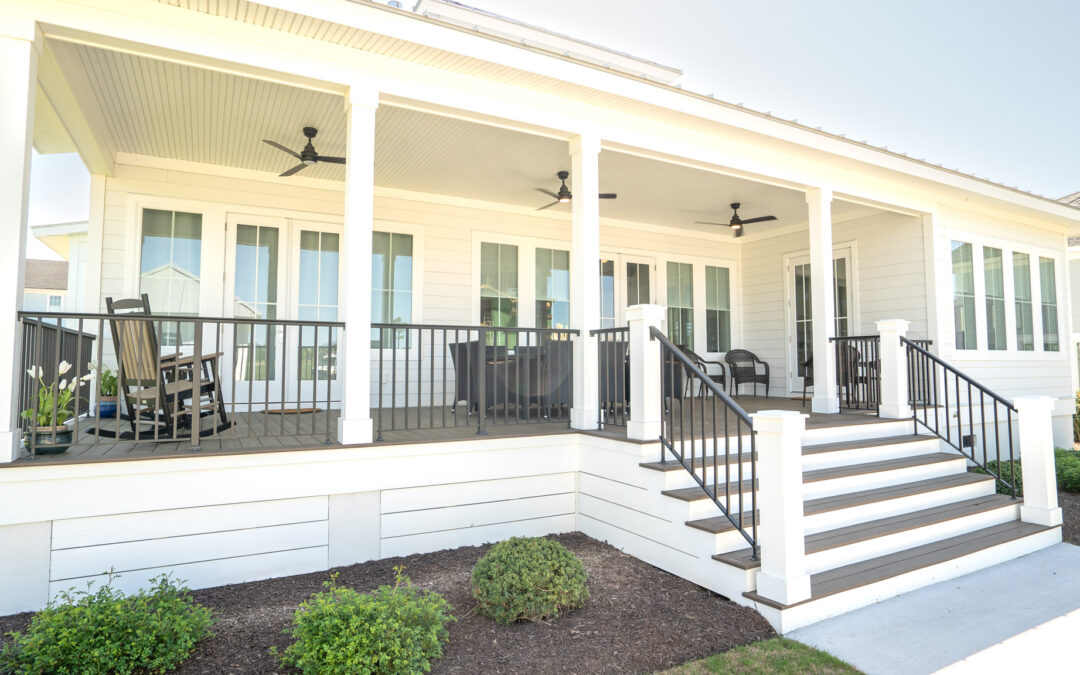Welcome to a world where sustainability meets modern living in large-scale residential developments. As we delve into the dynamic landscape of sustainable design, we uncover how this innovative approach reshapes how we build and inhabit our homes. Join us to explore the transformative power of sustainable design for home builders as we unravel its benefits, challenges, and prospects in creating communities that thrive harmoniously with nature.
Benefits of Sustainable Design in Residential Development
Sustainability with custom home builders offers a plethora of benefits that go beyond just environmental conservation. By integrating green building practices, developers can reduce energy and water consumption, lowering residents’ utility costs. Sustainable materials and technologies also enhance indoor air quality, promoting a healthier living environment.
Furthermore, incorporating sustainable design elements can increase property value and marketability in today’s eco-conscious society. Green buildings often attract buyers looking for homes with reduced carbon footprints and long-term cost savings. From energy-efficient appliances to passive solar design, these features benefit the planet and contribute to a more comfortable and efficient living space for occupants.
Moreover, sustainable residential developments help create vibrant communities by fostering social interaction and connectivity among residents who share similar values toward sustainability. The sense of pride in living in an environmentally responsible community further strengthens the neighborhood bond and promotes collective efforts toward a greener future.
Challenges and Limitations of Implementing Sustainable Design
Implementing sustainable design in large-scale residential developments has its fair share of challenges and limitations. One major obstacle is the initial cost of incorporating eco-friendly features and technologies. Developers often need help with financial constraints when trying to meet sustainability standards without compromising profitability.
Another challenge is the need for standardized regulations and guidelines for sustainable construction practices. This can lead to inconsistency in implementation across different projects, making it difficult to ensure a uniform level of environmental performance.
Moreover, there may be resistance from stakeholders who are hesitant to embrace unfamiliar green building techniques or materials. Education and awareness play a crucial role in overcoming this barrier and fostering acceptance of sustainable design principles.
Additionally, logistical issues such as sourcing eco-friendly materials, coordinating with various contractors, and navigating complex permitting processes can pose significant challenges during development.
Despite these obstacles, innovative solutions and technological advancements continue to drive progress toward more sustainable residential developments. By addressing these challenges head-on, the industry can pave the way for a greener future in homebuilding.
Strategies for Incorporating Sustainable Design in Large-Scale Residential Developments
Implementing sustainable design requires careful planning and strategic approaches when it comes to large-scale residential developments. One key strategy is prioritizing energy efficiency by incorporating solar panels, efficient insulation, and high-performance windows. These elements reduce the environmental impact and lower utility costs for residents.
Another practical approach is to focus on green spaces and landscaping within the development. By integrating native plants, rain gardens, and green roofs, developers can enhance biodiversity while promoting natural cooling and stormwater management. Additionally, utilizing sustainable materials in construction, such as recycled wood, bamboo flooring, or reclaimed bricks, can significantly reduce the development’s carbon footprint.
Furthermore, adopting innovative technologies like automated lighting systems, water-saving fixtures, and integrated waste management solutions can further enhance sustainability efforts in large-scale projects. Collaborating with architects, engineers, and sustainability experts from the early design stages is crucial for successfully implementing these strategies in residential developments.
The Importance of Community Engagement in Sustainable Development Projects
Community engagement is crucial to the success of sustainable development projects, especially in large-scale residential developments. By involving the local community in the planning and decision-making processes, developers can gain valuable insights into residents’ specific needs and preferences. This collaborative approach helps ensure that sustainable designs align with community values and priorities.
Moreover, engaging with the community fosters a sense of ownership and pride among residents toward their neighborhood. When people feel invested in the development process, they are more likely to support and uphold sustainable practices over time. Community input can also lead to innovative solutions that address unique challenges or opportunities within a particular area.
Residents’ feedback can enhance the livability and functionality of a sustainable development. Whether designing green spaces for recreation or implementing energy-efficient technologies, community engagement helps tailor solutions to meet the diverse needs of those who will ultimately inhabit these spaces.
Future Outlook for Sustainable Design in Residential Developments
As we look ahead to the future of sustainable design in residential developments, there is a growing momentum towards embracing eco-friendly practices and technologies. With the increasing awareness of climate change and environmental impact, home builders are pressured to prioritize sustainability in their projects.
Innovations such as green roofs, solar panels, and energy-efficient appliances are becoming more prevalent in large-scale residential developments. The integration of these features not only benefits the environment but also enhances the quality of life for residents.
There is a shift towards creating communities that promote healthy living through access to green spaces, walking paths, and bike lanes. This holistic approach to sustainable design ensures that residents enjoy a balanced lifestyle while minimizing their carbon footprint.
The future outlook for sustainable design in residential developments is promising as more stakeholders recognize the long-term benefits of environmentally conscious construction practices. By prioritizing sustainability, developers can create vibrant communities that thrive socially and ecologically.
Conclusion
Custom Home Builders play a pivotal role in large-scale residential developments. Its benefits go beyond environmental considerations to encompass social and economic advantages. Despite challenges and limitations, the industry continually evolves with innovative strategies for incorporating sustainable practices. Community engagement remains crucial for such projects’ success, ensuring that residents’ needs and aspirations are met. Looking ahead, the future of sustainable design in residential developments appears promising as more stakeholders recognize its long-term value and impact on society. The journey towards creating greener, healthier, and more resilient communities is ongoing, with sustainability at its core.

